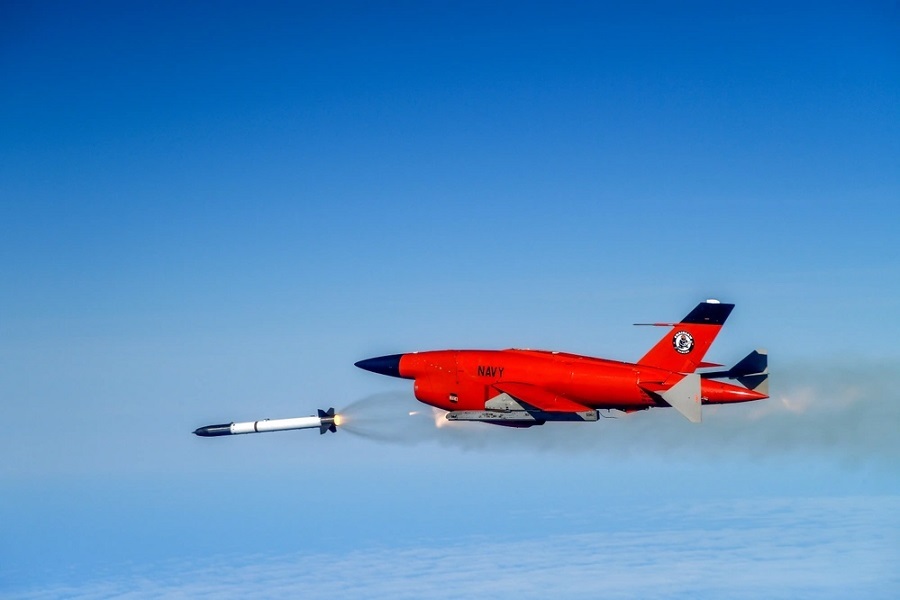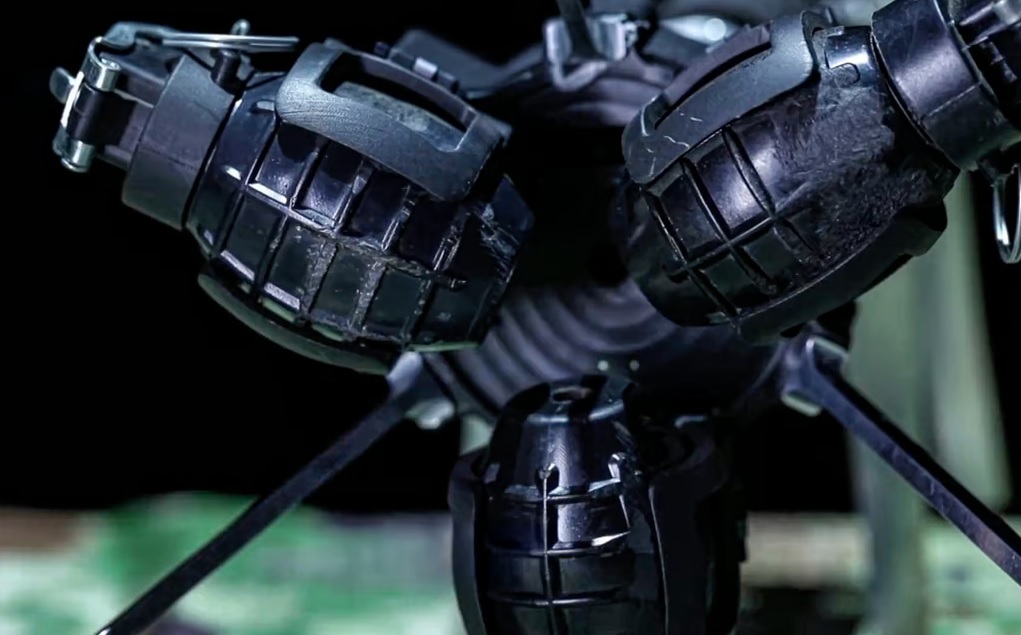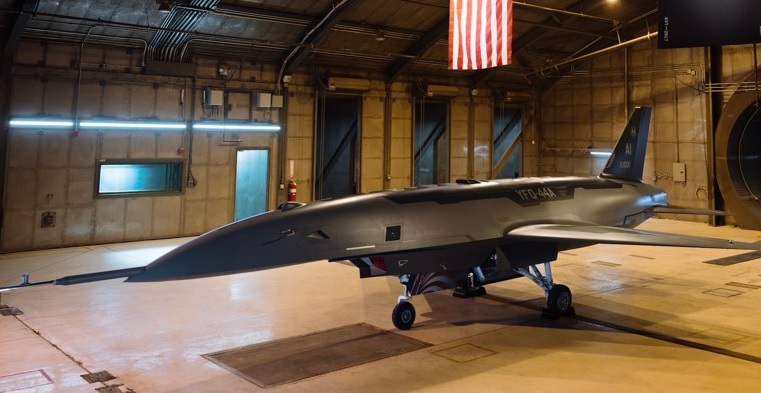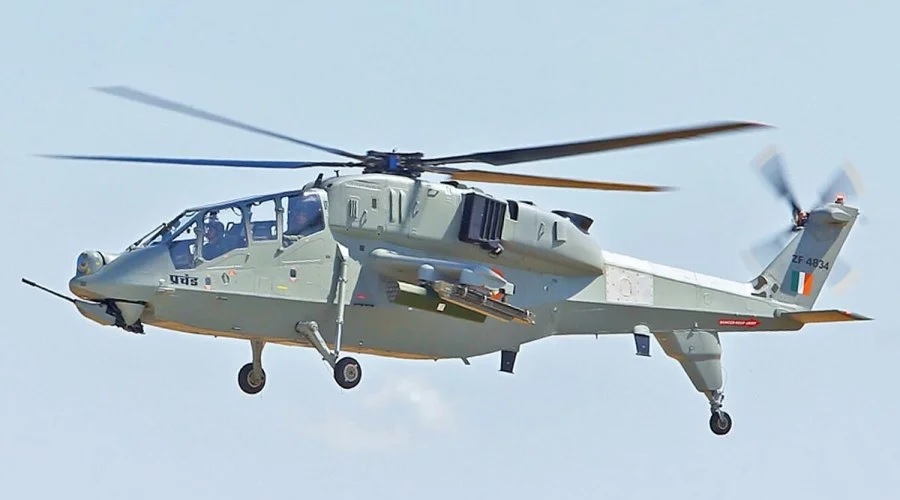World
The Baloch Liberation Army (BLA), a separatist militant group, has claimed responsibility for a series of coordinated attacks across 39 locations in Balochistan, Pakistan. These attacks targeted police stations, military convoys, and infrastructure along major highways. The BLA's spokesperson, Jeeyand Baloch, announced that these operations are ongoing, with multiple strategic objectives being pursued. Background Balochistan, despite being rich in natural resources such as gas, minerals, and coastal assets, remains one of the poorest and most underdeveloped regions of Pakistan. The BLA emerged in response to long-standing grievances over political marginalization, economic exploitation, and military repression by the Pakistani state. The group claims that Balochistan's vast natural resources are being extracted without benefiting the local population and accuses the government of denying the Baloch people their rights and autonomy. Recent Developments In August 2024, the BLA launched coordinated attacks in Pakistan's Balochistan province, killing at least 39 people. These attacks targeted key infrastructure, security posts, and Chinese interests, including the strategic port of Gwadar and Chinese nationals. The BLA has expanded its tactics to include women suicide bombers. The group was also involved in conflicts between Iran and Pakistan regarding militant bases. Balochistan’s instability affects Pakistan's plans to exploit its mineral wealth and hinders China's $65 billion investment in the China-Pakistan Economic Corridor (CPEC). Allegations of human rights abuses by security forces in Balochistan exacerbate the conflict, with widespread protests and denied accusations of enforced disappearances and extrajudicial killings.(Reuters) Human Rights Concerns Human rights organizations have reported that thousands of Baloch activists, students, journalists, and political workers have allegedly been abducted or killed by Pakistani security forces and intelligence agencies over the years. These victims are often labeled as "terrorists" or "foreign agents," while families are left without answers or legal recourse. Mass graves have been discovered in various districts, adding to the region's trauma and fueling further mistrust of state institutions. The BLA's recent activities mark a sharp escalation in the long-running struggle for autonomy and control of local resources in Balochistan. The group's coordinated attacks across multiple locations demonstrate its operational capabilities and the persistent challenges faced by the Pakistani government in addressing the underlying issues fueling the insurgency. As the situation continues to evolve, the need for a comprehensive approach that addresses political, economic, and human rights concerns becomes increasingly urgent.
Read More → Posted on 2025-05-11 06:08:36World
The United States Air Force Research Laboratory (AFRL) has taken a significant step forward in transforming military logistics by selecting Rocket Lab’s Neutron rocket for testing rapid, rocket-based cargo delivery to any location on Earth. As part of the AFRL’s Rocket Cargo program, this groundbreaking initiative aims to explore how commercial launch systems might one day support the quick and efficient transportation of military supplies across the globe. Pioneering Rapid Rocket-Based Logistics The Rocket Cargo program envisions a future where military supplies can be delivered rapidly and efficiently between distant points on Earth using rocket technology. The selection of Rocket Lab’s Neutron rocket marks a milestone in this vision. One of the key features under scrutiny will be Neutron’s ability to re-enter Earth’s atmosphere and land safely, allowing for reuse and making the concept of space-based cargo transport both viable and cost-effective. Rocket Lab has expressed enthusiasm about the project, emphasizing that this marks the beginning of a new era in commercial launch capability, tailored to advance global defense logistics. The test flight is slated to take place no earlier than 2026, signifying a significant step in the US Air Force’s efforts to innovate military logistics through modern aerospace technology. The Neutron Rocket: Setting New Benchmarks Neutron is Rocket Lab’s medium-lift, two-stage launch vehicle explicitly designed with reusability in mind. The first stage is responsible for the initial lift-off, while the second stage propels payloads into orbit. Though the primary focus of this test is rapid cargo delivery between terrestrial locations, Neutron is also built for versatility, including space exploration and deep space transport. The rocket boasts impressive payload capabilities, capable of carrying up to 13,000 kilograms (28,660 pounds) to low Earth orbit and up to 1,500 kilograms (3,300 pounds) to interplanetary destinations such as Mars or Venus. Rocket Lab’s founder, Peter Beck, has described Neutron as a powerful new option for both government and commercial space users, highlighting its performance, affordability, and reliability in the medium-lift category. A Strategic Move for Military Space Operations The collaboration between Rocket Lab and the US Air Force not only seeks to enhance space logistics but also underscores the Department of Defense’s confidence in Neutron’s capabilities. By pushing forward with this initiative, the Air Force aims to establish a reliable and rapid logistics solution that can adapt to modern defense challenges. Currently, Rocket Lab is working to obtain the National Security Space Launch certification for Neutron, which would allow it to compete for future military space launch contracts. As this project unfolds, it promises to redefine how military logistics are handled, with rocket-based cargo delivery potentially becoming a vital asset for rapid response scenarios and global defense readiness.
Read More → Posted on 2025-05-11 05:21:51India
In the aftermath of India’s decisive military strike under ‘Operation Sindoor,’ Pakistan has unleashed a full-blown disinformation offensive. Desperate to shift the focus and control the narrative, Islamabad has resorted to a barrage of lies, digital theatrics, and outright fabrications. What began as a focused and effective operation by the Indian Armed Forces has now transformed into an online propaganda war. Pro-Pakistan social media handles, along with influential political figures, are deliberately spreading fake news—crafting stories of imaginary military victories and heroic retaliations that never took place. Pakistan’s state-affiliated accounts have predictably fallen back on their familiar tactics: recycling outdated images, misrepresenting old videos, and manufacturing completely false claims. Their strategy is clear—flood the information space with lies so rapidly and overwhelmingly that it becomes difficult for anyone to distinguish fact from fiction. One of the most glaring examples is a viral image falsely claiming that the Pakistan Army shot down an Indian Rafale jet near Bahawalpur. In reality, the image was from a MiG-21 crash in Moga, Punjab, in 2021—completely unrelated to current events. Even senior officials like Pakistan’s Minister Attaullah Tarar have joined the misinformation campaign. He publicly endorsed a fabricated claim that the Indian Army raised a white flag and surrendered at Chora Post—an incident that never happened. Such false endorsements mislead the Pakistani public and fuel a false narrative. Another baseless story circulated was that Pakistan’s Air Force targeted the Srinagar airbase. This, too, was debunked, as the footage originated from sectarian clashes in Khyber Pakhtunkhwa, Pakistan, in early 2024, having no connection to Kashmir. Perhaps the most absurd claim was the suggestion that Pakistan destroyed an Indian Brigade Headquarters—a complete fabrication. Defence sources swiftly dismissed it as baseless. Pakistan’s Defence Minister Khawaja Asif further fueled the propaganda fire with his false claim that Indian soldiers were captured during the operation. This statement, like many others, was debunked and later retracted, with no evidence supporting it. In essence, Pakistan’s disinformation campaign is a calculated attempt to distort reality, mislead the media, and manipulate public perception. By flooding social media with recycled images, unrelated videos, and invented stories, Islamabad is trying to create an illusion of strength and retaliation. But behind the fog of propaganda lies the truth—India’s Operation Sindoor was a successful and well-executed strike. No amount of digital deceit can alter that reality.
Read More → Posted on 2025-05-08 16:21:46India
In the tense night hours of May 7-8, 2025, the already fragile peace between India and Pakistan took a dramatic turn. Pakistan, in an unexpected move, launched a series of drone and missile strikes aimed at multiple Indian military installations spread across Northern and Western India. These targets included sensitive locations such as Awantipura, Srinagar, Jammu, Pathankot, Amritsar, Kapurthala, Jalandhar, Ludhiana, Adampur, Bhatinda, Chandigarh, Nal, Phalodi, Uttarlai, and Bhuj. India's response was immediate and decisive. Leveraging its robust Integrated Counter UAS Grid and the formidable S-400 'Sudarshan Chakra' air defence systems, Indian forces successfully intercepted and neutralized the incoming threats. The debris recovered from various locations not only confirmed the attacks but also exposed the extent of Pakistan’s offensive intent. However, the situation escalated further when it was revealed that Indian forces had targeted and neutralized Pakistan’s air defence system in Lahore. This strategic move was not just a defensive measure but a powerful counter-strike designed to cripple Pakistan’s ability to launch further air attacks. The Indian government confirmed that this action was part of a broader set of retaliatory strikes aimed at eliminating terror infrastructure across the border. These developments were the culmination of rising hostilities triggered by a deadly terrorist attack in Pahalgam, Jammu and Kashmir, on April 22, 2025. The attack, which claimed the lives of 26 civilians, including women and children, was attributed to Pakistan-based terror groups. Enraged by the loss of innocent lives and determined to prevent further violence, India launched a series of precision strikes against nine key terror camps in Pakistan and Pakistan-occupied Jammu and Kashmir (PoJK). Among these were camps operated by Jaish-e-Mohammed (JeM), Lashkar-e-Taiba (LeT), and Hizbul Mujahideen. Four of these camps were located deep within Pakistan’s territory in Bahawalpur, Muridke, Sarjal, and Mehmoona Joya, while the other five were strategically placed in PoJK. These included Markaz Ahle Hadith Barnala in Bhimber, Markaz Abbas and Maskar Raheel Shahid in Kotli, Shawai Nallah Camp, and Markaz Syedna Bilal in Muzaffarabad. As India’s counter-offensive unfolded, Pakistan responded with intensified artillery and mortar attacks along the Line of Control (LoC). Districts such as Kupwara, Baramulla, Uri, Poonch, Mendhar, and Rajouri were subjected to heavy shelling. Sixteen more civilians lost their lives, including three women and five children, further aggravating the situation. India, while asserting its commitment to maintaining peace, made it clear that any further provocations would be met with a decisive response. The Indian Armed Forces emphasized their adherence to a policy of non-escalation, provided it was respected by the Pakistani military. The international community has expressed growing concern over the rapid escalation, with global leaders calling for restraint and a return to diplomatic channels. Yet, on the ground, the situation remains tense, with both nations on high alert, and the shadow of conflict looming large.
Read More → Posted on 2025-05-08 16:12:01World
In a remarkable leap for modern missile technology, the U.S. Navy has successfully tested an advanced Solid Fuel Integral Rocket Ramjet (SFIRR) propulsion system by launching it from an unmanned aerial vehicle for the very first time. This test, conducted by the Naval Air Warfare Center Weapons Division (NAWCWD), marks a significant milestone in the Navy’s mission to modernize its long-range strike capabilities and enhance the speed and reach of its future weapons. The test was carried out using a BQM-34, an unmanned target drone modified to serve as the launch platform. What made this trial groundbreaking was the integration of a fire control system aboard the unmanned vehicle, enabling a live-fire scenario without risking any crew. This development proves the potential for engaging targets from greater distances with improved safety and operational flexibility. What is a Solid Fuel Ramjet? A Solid Fuel Ramjet is a type of missile propulsion system that uses solid fuel rather than liquid propellants. Unlike traditional rocket engines that burn all their fuel internally, a ramjet takes in air from the atmosphere during flight, mixing it with the fuel to maintain combustion and thrust. The advantage of this system lies in its simplicity and efficiency — eliminating the need for complex fuel tanks and pumps, reducing weight, and freeing up more space for payloads. Key Specifications and Features of the SFIRR: Propulsion Type: Solid Fuel Integral Rocket Ramjet Fuel Type: Solid fuel grain integrated within the air duct Launch Platform: BQM-34 unmanned aerial vehicle Operational Benefits: Higher sustained speeds at longer ranges Simplified design with no liquid fuel handling Greater missile payload capacity Improved manoeuvrability during flight Lower maintenance and better storage safety Why This Test Matters Though ramjet technology has been around for decades, this new test shows its continued importance in modern warfare. By refining older concepts with today’s advanced materials, avionics, and fire control systems, the Navy is creating faster, longer-range, and more reliable weapons suited for future combat environments. Abbey Horning, Product Director at NAWCWD, emphasized that the rapid development of this demonstrator — completed within just 12 months — proves the Navy’s ability to quickly transition advanced research into operational technology. She stated, “This successful integration validates key aspects of our design and moves us closer to delivering an advanced propulsion system that will provide warfighters with greater range and speed.” Modernizing for Future Conflicts Ephraim Washburn, Deputy Director for Energetics at NAWCWD, compared the evolution of SFIRR technology to the continuous improvements made in the automotive industry. “We’ve been driving cars since the early 1900s, but that doesn’t mean we stopped improving them,” he remarked. The same principle applies to missile propulsion — what worked in the past is now being reengineered to meet the demands of contemporary battlefields. What’s Next? The insights from this successful test have already shaped the development of a next-generation missile prototype. Future efforts will focus on refining the system’s range, endurance, and targeting precision, ensuring the technology remains combat-credible and ready for fleet integration. As the Navy works closely with government research agencies, defense contractors, and academic partners, advanced propulsion systems like the SFIRR are expected to play a vital role in keeping the U.S. Navy ahead in terms of speed, reach, and operational superiority. This latest test is not just about revisiting an old idea — it’s about reimagining and upgrading it to tackle the complex, high-speed warfare scenarios of tomorrow.
Read More → Posted on 2025-05-08 16:06:03India
India’s armed forces recently demonstrated their growing precision strike and surveillance capabilities with the successful execution of Operation Sindoor — a bold and carefully calculated military operation against terrorist camps located across the border. What made this operation particularly notable was the prominent role played by indigenously manufactured SkyStriker drones, which underscored India's rapid progress in developing homegrown defence technologies. Operation Sindoor: A Decisive, Non-Escalatory Strike The operation, described by official sources as a "measured and non-escalatory" response, was carried out jointly by India’s land and air forces. In a swift 25-minute window, precision strikes were launched on nine terrorist camps located in Pakistan’s Punjab province and Pakistan-occupied Jammu and Kashmir (PoJK). This operation marked a significant moment in military history, being the first Indian strike into Pakistan’s Punjab region since the 1971 war. It was reportedly conducted in retaliation for the April 22 terror attack in Pahalgam, Jammu and Kashmir, where 26 innocent civilians, including tourists, lost their lives. India’s Defence Minister Rajnath Singh emphasized that the action was a justified exercise of India's "Right to Respond". SkyStriker: The Stealth Kamikaze Drone Leading the Attack Among the advanced weaponry deployed, the SkyStriker loitering munition drones captured attention. Produced at a modern facility in Bengaluru under a collaboration between Alpha Design Technologies and Israel’s Elbit Systems, the SkyStriker represents a vital achievement in the ‘Make in India’ defence initiative. These loitering munitions, often called "suicide drones", are designed to hover silently over a target area, detect hostile threats, and dive onto the target with pinpoint accuracy, detonating their onboard warhead. Key Specifications of the SkyStriker Drone Type: Loitering Munition / Kamikaze Drone Warhead Capacity: Configurable — 5 kg or 10 kg Operational Range: Up to 100 km Loitering Time: Up to 2 hours with a 5 kg warhead Propulsion: Electric motor (low acoustic signature for stealth) Speed: Maximum attack speed of 185 km/h (approx. 100 knots) Launch Mode: Canister launch, easily deployable from mobile platforms Target Engagement: Autonomous, operator-designated, or pre-programmed targets Guidance: GPS-based navigation with electro-optical and infrared sensors for real-time surveillance and target identification The SkyStriker’s ability to quietly patrol an area, track a target, and strike at the precise moment makes it a highly effective tool in modern asymmetric warfare. Loitering Munitions: Changing the Face of Modern Combat Unlike traditional missiles that follow a direct path to their target, loitering munitions can remain airborne over a designated zone, providing real-time surveillance before delivering their payload. This allows forces to strike high-value targets while minimizing collateral damage. Their increasing presence in modern militaries worldwide signals a shift towards more precise, flexible, and responsive strike capabilities, especially suited for operations against concealed or mobile targets in complex environments. Other Advanced Weapons Deployed Alongside the SkyStriker drones, Operation Sindoor also utilized: SCALP Air-Launched Cruise Missiles: French-made, long-range, deep-strike missiles with pinpoint accuracy. HAMMER (Highly Agile Modular Munition Extended Range): A smart air-to-surface munition capable of engaging fortified and moving targets with exceptional precision. Other Indigenous and Imported Systems: While exact details remain classified, reports confirm the coordinated use of multiple weapon systems, highlighting India’s growing integrated warfare capabilities. A Message of Resolve Operation Sindoor wasn’t merely a tactical victory; it sent a clear message. By integrating homegrown unmanned strike systems like the SkyStriker with sophisticated imported weaponry, India showcased not just its technological self-reliance, but also its ability to deliver decisive, controlled, and proportionate responses to acts of terror. As India continues to modernize its armed forces and invest in indigenous defence solutions, operations like Sindoor underline the country’s enhanced capacity to neutralize threats well beyond its borders, with precision and accountability.
Read More → Posted on 2025-05-08 15:59:48India
In a decisive move against terrorism, the Indian Armed Forces launched Operation Sindoor, targeting nine terrorist infrastructures in Pakistan and Pakistan-Occupied Kashmir (PoK). This operation was a direct response to the tragic Pahalgam terror attack on April 22, 2025, which claimed the lives of 26 civilians, including 25 Indian tourists and one Nepalese national. Background of the Operation The Pahalgam attack was one of the deadliest in recent years, reminiscent of the 2019 Pulwama incident. In retaliation, India executed Operation Sindoor on May 7, 2025, aiming to dismantle terrorist camps responsible for cross-border terrorism. The operation specifically targeted areas known to harbor groups like Jaish-e-Mohammed (JeM) and Lashkar-e-Taiba (LeT). Execution with Precision According to Defence Minister Rajnath Singh, Operation Sindoor was carried out with "unimaginable" precision, resulting in the destruction of nine terrorist camps and the elimination of numerous terrorists. The operation was meticulously planned to ensure minimal collateral damage, showcasing the professionalism and advanced capabilities of the Indian Armed Forces. International Reactions and Escalation Pakistan condemned the strikes, reporting civilian casualties and labeling the action as an act of war. In response, Pakistan launched counter-strikes, further escalating tensions between the two nuclear-armed neighbors. The international community, including the United Nations and major world powers, expressed concern over the rising hostilities and urged both nations to exercise restraint. India's Stance on PoK Defence Minister Rajnath Singh reiterated India's position that Jammu and Kashmir is incomplete without PoK. He emphasized that PoK has been used as a base for terrorist activities against India and called upon Pakistan to dismantle terrorist camps operating in the region. Operation Sindoor underscores India's commitment to safeguarding its citizens and combating terrorism. While the operation achieved its immediate objectives, the situation remains tense, highlighting the need for sustained diplomatic efforts to address the root causes of conflict and ensure long-term peace in the region.
Read More → Posted on 2025-05-08 15:58:13World
In a major boost for maritime defense, Israel Aerospace Industries (IAI) and Hellenic Aerospace Industry (HAI) have signed a Memorandum of Understanding (MoU) to introduce the advanced BlueWhale autonomous submarine system to the Hellenic Navy. The agreement was officially announced during the prestigious DEFEA defense exhibition, highlighting a new chapter in the growing defense and industrial cooperation between Greece and Israel. A Strategic Defense Partnership This partnership is not just about delivering a new system — it’s about building long-term technological collaboration. Under this agreement, HAI will play a crucial role in the production, integration, and further development of the BlueWhale system. This cooperation will allow Greek engineers and experts to work closely with Israeli teams, gaining access to advanced underwater defense technology while strengthening Greece’s local defense industry. It also opens the door for technology transfer initiatives, ensuring that Greece not only operates cutting-edge systems but can also maintain and upgrade them independently in the future. What is the BlueWhale Autonomous Submarine? Developed by IAI, the BlueWhale is a large, uncrewed underwater vehicle designed to perform many of the same missions as a traditional manned submarine, but without putting human lives at risk. Its capabilities cover a wide range of underwater operations, including: Covert Intelligence Gathering Submarine and Underwater Target Detection Mine Detection and Countermeasures Electronic Warfare and Surveillance Key Specifications of the BlueWhale: Length: 10.9 meters Diameter: 1.12 meters Weight: 5.5 tons Operational Endurance: Several weeks Mission Capabilities: ISR (Intelligence, Surveillance, Reconnaissance), EW/ESM (Electronic Warfare/Electronic Support Measures), and MCM (Mine Countermeasure) Operational History: Thousands of successful diving hours in various environments This autonomous submarine is designed to patrol and monitor critical sea areas, particularly useful for nations with complex maritime geography, such as the Aegean Sea. Its ability to stay underwater for extended periods, gather real-time data, and neutralize underwater threats without human involvement makes it a valuable asset for modern navies. Leaders Speak on the Collaboration IAI President and CEO Boaz Levy expressed his enthusiasm for the agreement, describing it as a significant step in enhancing Greece’s defense capabilities while promoting regional security and resilience. He emphasized IAI’s commitment to providing operationally tested, modern solutions that also help local industries grow. HAI CEO, Rear Admiral (ret.) Alexandros Diakopoulos, highlighted the strategic importance of integrating the BlueWhale system, particularly in light of the Aegean Sea’s challenging underwater environment. He pointed out that persistent underwater surveillance and rapid response capabilities would give Greece a vital operational advantage. A New Era for Greece’s Undersea Defense The collaboration between Greece and Israel marks more than just a defense deal. It represents a shift towards modernizing naval capabilities with autonomous systems, reducing operational risks, and building domestic technological expertise. The BlueWhale autonomous submarine system will play a critical role in safeguarding Greece’s maritime interests, enhancing anti-submarine warfare, underwater surveillance, and mine-clearing operations in one of Europe’s most strategically significant waterways.
Read More → Posted on 2025-05-08 15:47:24World
The U.S. Navy is taking a significant step forward in modernizing its mine countermeasure capabilities by awarding Bollinger Shipyards a $65.7 million contract modification. This contract will further the production of the Navy’s cutting-edge Mine Countermeasures Unmanned Surface Vehicles (MCM USVs), marking a continued commitment to integrating autonomous technology into naval operations. A Strategic Investment in Uncrewed Technology The latest contract from the Department of Defense covers both engineering updates and the construction of additional uncrewed minehunting vessels. These MCM USVs are specifically designed to operate in dangerous, mine-laden waters without putting sailors at risk. This approach aligns with the Navy’s ongoing strategy to phase out manned minehunting methods and replace them with advanced autonomous systems. Production under the new contract will be carried out at several U.S. locations, including Lockport, Louisiana; Portsmouth, Virginia; Columbus, Indiana; and Slidell, Louisiana. The project is being managed by the Naval Sea Systems Command, based in Washington, D.C., with completion expected by September 2028. Funding for this initiative comes from the Navy’s Fiscal 2024 and 2025 procurement budget, totaling over $65 million. Bollinger’s Role and Technological Advancements Bollinger Shipyards, headquartered in Lockport, Louisiana, has been at the forefront of building uncrewed surface vessels for the Navy. Earlier this year, the company delivered the first three MCM USVs to the Navy, marking the service’s initial full-rate production of autonomous surface vessels. These deliveries highlight the Navy’s evolving strategy to reduce human involvement in mine countermeasure missions while enhancing safety and efficiency. Ben Bordelon, President and CEO of Bollinger Shipyards, expressed pride in delivering these first production units, emphasizing the company’s dedication to equipping the Navy with advanced, next-generation capabilities. The successful handover of these vessels underlines Bollinger’s technical expertise and commitment to supporting the Navy’s modernization efforts. Replacing Aging Systems with Autonomous Solutions The MCM USVs are set to replace the aging fleet of manned MCM-1 Avenger-class ships and MH-53E helicopters, both of which have been integral to mine countermeasures for decades. The uncrewed vessels are designed to take on minehunting, minesweeping, and mine neutralization tasks, using Payload Delivery Systems (PDSs) to deploy both current and future mine warfare payloads. By adopting these uncrewed technologies, the Navy aims to maintain its mine countermeasure capabilities while reducing the risk to personnel and streamlining operations. The integration of MCM USVs into the fleet is expected to enhance the Navy’s ability to operate safely and efficiently in mine-infested waters. As the Navy continues to modernize its approach to mine warfare, the partnership with Bollinger Shipyards demonstrates a clear commitment to leveraging autonomous technology for safer and more effective naval operations. With the new contract secured, the production and deployment of these uncrewed minehunters will undoubtedly play a crucial role in the future of naval mine countermeasures.
Read More → Posted on 2025-05-08 15:42:10India
India recently showcased its formidable air defence and precision strike capabilities by successfully neutralising a large-scale missile and drone attack launched by Pakistan. In a bold and calculated military operation, India deployed its advanced Russian-made S-400 ‘Sudarshan Chakra’ missile defence systems alongside Israeli HARPY loitering drones, effectively protecting multiple military installations across northern and western India. The Escalation: Pakistan’s Midnight Strike Late Wednesday night, Pakistan attempted a surprise missile and drone assault on 15 key Indian military locations including Srinagar, Jammu, Pathankot, Amritsar, Chandigarh, and Bhuj. The attack was a retaliation to India’s ‘Operation Sindoor’, where the Indian Armed Forces had earlier struck nine terrorist bases in Pakistan and Pakistan-occupied Kashmir (PoK) in response to a terror attack in Pahalgam that killed 26 civilians. The Pakistani assault, launched under the cover of darkness, aimed to overwhelm India’s air defence network. However, what followed was a swift, coordinated and highly effective defensive and counter-offensive action by India. S-400 ‘Sudarshan Chakra’: India’s Air Defence Crown Jewel India’s most advanced air defence shield, the S-400 Triumf, locally nicknamed ‘Sudarshan Chakra’, proved its worth during the confrontation. Just like the mythical spinning weapon of Lord Vishnu known for cutting down evil, the S-400 intercepted all 15 incoming missiles from Pakistan before they could reach Indian soil. Specifications of the S-400 ‘Sudarshan Chakra’: Detection Range: 600 km Target Engagement Range: Up to 400 km Simultaneous Target Tracking: 80 targets Missiles Deployed: 40N6E, 48N6DM, 9M96E2 Speed: Up to Mach 14 (for interceptor missiles) Coverage: Deployed across Punjab, Jammu & Kashmir, Rajasthan, Gujarat India had signed a ₹35,000 crore deal for five squadrons with Russia. As of now, three squadrons are fully operational, with two more scheduled for deployment by 2026. The S-400’s precision, long-range interception, and multi-layered defence made it possible to neutralise Pakistan’s barrage without a single missile hitting its intended target. HARPY Drones: Silent Hunters of Enemy Radars Following the missile interception, India immediately launched a series of HARPY loitering drones developed by Israel. These special drones are designed to suppress enemy air defences by autonomously detecting radar emissions and destroying them. Key Features of the IAI HARPY Drone: Endurance: Up to 9 hours Warhead: High-explosive Operation: Day & night, all weather Seeker Type: Anti-radiation, radar frequency seeker Primary Role: Destroy enemy radar stations and air defence networks In this operation, the HARPY drones reportedly destroyed radar stations in Lahore and several other sites, blinding Pakistan’s air defence grid and ensuring safe skies for further Indian military operations. Why India’s Air Defence Outshines China’s HQ-16 Pakistan, a close military ally of China, has deployed the Chinese HQ-16 air defence system in many of its defence setups. However, the HQ-16 is simply no match for India’s advanced S-400 system. Why HQ-16 Falls Behind: Engagement Range: Only up to 70 km (compared to 400 km of S-400) Simultaneous Target Tracking: 32 targets (half of what S-400 can handle) Missile Speed: Much slower than the hypersonic interceptors of the S-400 Limited Operational Ceiling: Inadequate against high-speed, long-range missiles and stealth drones Additionally, the HQ-16 lacks the multi-layered missile options available to the S-400, making it vulnerable to saturation attacks and modern electronic warfare. This technological gap was clearly visible as India’s HARPY drones easily penetrated Pakistani defences during the recent conflict. China’s HQ-16 is essentially a licensed derivative of an older Russian system, and while it provides basic defence, it cannot match the sophistication, range, or integration capabilities of India’s S-400 network. A Measured Yet Firm Indian Response The Indian government made it clear that its response was “in the same domain with the same intensity” — targeting only military infrastructure, not civilian areas. Defence Minister Rajnath Singh reaffirmed that while India seeks peace, it will decisively respond to any provocation. Debris of downed Pakistani drones and missiles is being collected and documented, strengthening India’s diplomatic stance against Pakistan’s role in sponsoring cross-border terrorism. Strategic Message to the Region This conflict underscores India’s growing air defence supremacy and operational readiness. The combination of S-400 interceptors, HARPY drones, and a robust Integrated Counter-UAS Grid has set a new benchmark in regional defence strategy. While tensions along the border remain high, India’s restraint in avoiding civilian targets and its focus on neutralising terrorist infrastructure reflect a commitment to responsible military conduct. India’s decisive action in countering Pakistan’s missile and drone attack, coupled with its advanced air defence technology and strategic military planning, sent a clear message across the region: India is not only capable of defending its skies but also of blinding its adversaries' defences in minutes. In stark contrast, Pakistan’s reliance on Chinese-made HQ-16 systems and older technology proved ineffective and outdated. The recent events have not only showcased India’s superior military preparedness but also highlighted the weaknesses in Pakistan’s and, by extension, China’s regional military offerings. Suggested Title: "Sudarshan Chakra in the Skies: How India’s S-400 and HARPY Drones Crushed Pakistan’s Missile Strike" Would you like me to draft a closing paragraph or a summary box for this article too?
Read More → Posted on 2025-05-08 15:04:50World
In a significant development for the UK’s defence sector, Rolls-Royce has secured a five-year contract from the UK Ministry of Defence (MOD) to maintain and service the EJ200 engines that power the Royal Air Force’s Typhoon aircraft. The contract, known as the Typhoon Engine Support Solution (TESS), is a major step in ensuring the continuous readiness of the RAF's fleet while boosting the country's defence industry. A Strategic Partnership The TESS contract not only aims to maintain around 130 EJ200 engines but also supports approximately 200 direct jobs. More importantly, it sustains a wider UK-based supply chain, helping secure up to 2,400 jobs nationwide. By focusing on domestic capabilities, this initiative is expected to strengthen the resilience of the UK’s defence infrastructure, preserving vital skills and expertise within the country. Most of the maintenance work will be carried out at Rolls-Royce’s Defence headquarters in Bristol. This site is not just a maintenance hub; it’s also a core center for research, development, and manufacturing of military power and propulsion systems. Its strategic role in both maintaining current capabilities and shaping the future of aircraft technology underscores the importance of such domestic facilities. Bridging Defence and Civil Innovation One of the noteworthy aspects of the contract is its alignment with the UK's future combat aircraft initiatives, including the Global Combat Air Programme (GCAP). Rolls-Royce points out that around 80% of the technologies developed for these future combat programmes could be applied in the civil sector as well. This dual-use approach demonstrates how investments in defence technology can also foster advancements in civilian industries, boosting the UK’s competitiveness across various fields. Securing the Future By securing this five-year contract, Rolls-Royce reaffirms its long-standing commitment to supporting the Royal Air Force. The agreement not only ensures the operational readiness of the Typhoon aircraft but also contributes to sustaining critical jobs and technological expertise within the UK. As the RAF looks to the future, with initiatives like GCAP on the horizon, partnerships like these are crucial for maintaining both defence capabilities and economic resilience.
Read More → Posted on 2025-05-08 15:00:55India
In a major setback to Pakistan’s air defence network, recent unverified reports claim that an Indian Air Force IAI Harop loitering munition successfully targeted a Chinese-made HQ-16 (LY-80) surface-to-air missile (SAM) system in Walton, Lahore. The incident allegedly left four Pakistani soldiers injured and reportedly damaged key components of the missile battery, including a command vehicle and possibly a radar system. The attack is believed to have occurred in a sensitive military zone close to the Indian border, an area critical for Pakistan’s airspace security in the Punjab region. Images circulating on social media appear to show a destroyed military truck, suspected to be the mobile command post of the HQ-16 system, suggesting a serious operational blow to Pakistan’s already fragile air defence setup. What is the HQ-16 (LY-80)? The HQ-16, exported as LY-80, is a Chinese-manufactured medium-range surface-to-air missile system, designed to counter airborne threats such as fighter aircraft, drones, and cruise missiles within a range of 40 to 70 kilometers and at altitudes up to 18 kilometers. Pakistan’s 4th Air Defence Regiment operates this system as a critical shield for its northern territories and key cities like Lahore. The battery includes a combination of radar vehicles, missile launchers, and command units mounted on mobile trucks. Exposing the Limitations of Chinese Air Defence Systems While China markets the HQ-16 as a modern and reliable SAM platform, this incident highlights significant vulnerabilities in the system’s operational effectiveness. The inability to detect and intercept a loitering munition like the IAI Harop, which is designed specifically for hunting and destroying enemy radar and air defence assets, raises serious doubts about the true combat capability of the HQ-16. Unlike advanced Western and Israeli air defence systems, the HQ-16 reportedly struggles with low-signature, precision-guided weapons and drones — a critical disadvantage on the modern battlefield, where unmanned aerial systems are now the centerpiece of aerial warfare. Moreover, the HQ-16’s limited radar detection range, slower reaction time, and susceptibility to electronic warfare have been repeatedly questioned by defence analysts. Incidents like this further tarnish the reputation of Chinese air defence exports, which are often touted as affordable but technologically inferior alternatives to Western and Israeli systems. A Boost for Indian Precision Strike Capability The alleged success of the Indian IAI Harop loitering munition in this operation demonstrates the growing precision-strike capabilities of the Indian Air Force. The Harop, capable of silently loitering over a target area for extended periods before striking with high accuracy, is especially effective against static and mobile air defence systems — as this incident appears to prove. For India, this incident serves as a reminder of its technological edge in unmanned aerial warfare in the region. It also sends a clear message to adversaries relying on imported, untested air defence systems that are ill-equipped for modern drone warfare. Pakistan’s Silence Speaks Volumes As expected, there has been no official statement from the Pakistani military or government, consistent with their long-standing policy of denying sensitive military setbacks. However, unofficial sources from Pakistan, including social media accounts, have hinted that "some batteries" of the HQ-16 system were indeed damaged in the strike. If confirmed, this would be a significant blow to Pakistan’s air defence posture, temporarily weakening its shield in a strategically vital sector close to the Indian border. While official confirmation is still awaited, this reported incident underscores the growing gap between India’s cutting-edge precision-strike capabilities and Pakistan’s reliance on imported, often overrated Chinese weaponry. The HQ-16’s inability to safeguard even its own position against a loitering drone raises serious questions about its battlefield reliability and exposes vulnerabilities in Pakistan’s air defence network — vulnerabilities that India seems increasingly capable of exploiting.
Read More → Posted on 2025-05-08 14:56:30World
In early May 2025, over 300 residents of Myanmar sought refuge in Thailand following a significant assault on a military base by ethnic armed groups. This incident underscores the persistent instability in Myanmar, even after a ceasefire was declared to facilitate earthquake recovery efforts. Escalation of Conflict Near the Thai Border On May 7, the Karen National Liberation Army (KNLA) and the Karen National Defence Organisation (KNDO) launched a coordinated attack on a Myanmar military base in Kayin State, approximately 2.5 kilometers from the Thai border. The offensive involved close-range tactics and the deployment of armed drones to drop explosives throughout the day. As a result, several Myanmar soldiers were killed, and some fled across the border into Thailand. Humanitarian Response in Thailand By May 8, Thai authorities reported that 327 Myanmar nationals had crossed into Thailand, seeking shelter in temporary sites, including local temples. The Thai military and police provided security and humanitarian aid to these individuals. In response to the incursion, Thai forces increased patrols along the border in Tak Province to prevent potential breaches of sovereignty by foreign armed forces. Ceasefire Amidst Earthquake Recovery Efforts Following a devastating 7.7 magnitude earthquake on March 28, which resulted in over 3,700 deaths and left tens of thousands homeless, Myanmar's military government and various armed groups announced a ceasefire to aid relief and recovery operations. However, the truce has been repeatedly violated, with reports of continued military airstrikes and attacks by armed groups. Ongoing Humanitarian Crisis The earthquake compounded the challenges faced by Myanmar, a nation already grappling with civil conflict since the 2021 military coup. The disaster caused widespread destruction across multiple regions, including Mandalay and Naypyitaw, severely damaging infrastructure and hampering aid delivery. Over 200,000 people have been displaced, with many seeking shelter in temporary camps or relocating independently. International aid has been mobilized, with countries like India launching "Operation Brahma" to provide urgent medical care and relief materials. Despite these efforts, the ongoing civil unrest and infrastructure damage continue to complicate rescue and relief operations. The recent attack near the Thai border and the subsequent displacement of civilians highlight the fragile state of Myanmar's ceasefire and the broader humanitarian crisis. As the nation struggles to recover from a catastrophic earthquake, the persistence of armed conflict poses significant challenges to relief efforts and the safety of its citizens.
Read More → Posted on 2025-05-08 14:48:37World
China has taken another bold step in modernizing its military by unveiling a new micro-drone designed to support its People’s Liberation Army (PLA) in future battlefields dominated by artificial intelligence (AI) and autonomous systems. This small but powerful drone is part of China’s growing ambition to lead the world in “intelligent warfare.” A Tiny, High-Tech Drone for the Modern Battlefield At first glance, this micro-drone looks like an ordinary thermal flask. But inside its compact frame lies a sophisticated piece of military technology. Weighing less than one kilogram (about two pounds), it is light enough for infantry soldiers to carry easily in the field. Despite its lightweight build, the drone can lift up to twice its own weight, thanks to an efficient coaxial dual-rotor system that provides stable flight even in challenging environments. One of its most impressive features is an onboard neural processor powered by AI. This allows a single soldier to control multiple drones at once, coordinating reconnaissance, targeting, and strike missions with precision. This networked control capability marks a significant advancement in small unmanned aerial systems (UAS) for China. Silent, Versatile, and Deadly The micro-drone is designed to operate silently, reducing the chances of detection during reconnaissance or surprise attacks. Its foldable rotors make it easy to pack and deploy in the field, while modular payload bays allow soldiers to equip it for different missions — from surveillance to direct attack. In combat, the drone can be armed with up to three small grenades, turning it into a compact airborne weapon system. It can also be launched from a 35mm grenade launcher, giving it an extended range and the ability to be rapidly deployed into combat zones or behind enemy lines. Key Specifications: Weight: Under 1 kg (approx. 2 lbs) Payload Capacity: Up to 2 kg (twice its weight) Rotor System: Coaxial dual-rotor for stable, efficient flight Processor: AI-powered onboard neural processor for intelligent targeting and multi-drone control Armament: Can carry up to 3 grenades Launch Method: Can be deployed by hand or from a 35mm grenade launcher Features: Silent operation, foldable rotors, modular payload bays A Part of China’s Intelligent Warfare Vision This micro-drone represents more than just a new piece of equipment — it’s a glimpse into China’s future warfighting strategy. The PLA is shifting from “informationized” warfare, which focuses on securing and managing information dominance, to “intelligentized” warfare, where AI, autonomous systems, and human-machine collaboration will define combat operations. By integrating AI into unmanned systems like this micro-drone, China aims to create faster, smarter, and more flexible forces capable of overwhelming adversaries through speed, precision, and coordinated autonomous attacks. China’s Ambition for a World-Class Military China has set a goal to build a world-class military by 2049, the centenary of the People’s Republic. Over the years, the PLA has rapidly expanded its drone programs, covering everything from large combat drones to tiny reconnaissance UAVs like this new micro-drone. Despite facing challenges such as corruption within military ranks and the need to recruit highly skilled technical personnel, China has made notable progress in integrating advanced technologies into its armed forces. As advanced unmanned systems become increasingly important in modern conflicts, China’s new micro-drone showcases the nation’s commitment to staying ahead in the global race for AI-driven, intelligent warfare capabilities.
Read More → Posted on 2025-05-02 15:42:55India
Air Marshal Narmdeshwar Tiwari has officially taken over as the new Vice Chief of the Air Staff of the Indian Air Force. He stepped into the role on Friday, following the retirement of Air Marshal S P Dharkar, who superannuated on April 30. Before this prestigious appointment, Air Marshal Tiwari was serving as the Air Officer Commanding-in-Chief (AOC-in-C) of the South Western Air Command, based in Gandhinagar. He had assumed that role in May 2023 and brought with him a wealth of operational and leadership experience. To mark his new position, he was presented with a ceremonial guard of honour at the Air Headquarters, Vayu Bhawan. Air Marshal Tiwari was commissioned into the fighter stream of the Indian Air Force in June 1986. He is an alumnus of the National Defence Academy (NDA) and graduated as the President’s Gold Medallist — an honour awarded to the best all-round cadet in the passing-out batch. Over the years, he has flown several types of aircraft and holds qualifications as both a flying instructor and an experimental test pilot. His career has been rich with field experience, including the operational testing of weapons and systems, especially on the Mirage-2000 fighter jet. He also played a key role in the Kargil conflict, taking part in several critical missions that demonstrated his courage and tactical expertise. With his extensive operational background and leadership in key commands, Air Marshal Tiwari’s appointment as the Vice Chief is expected to further strengthen the Indian Air Force’s strategic capabilities. His experience and dedication will play an important role in guiding the Air Force through its future challenges.
Read More → Posted on 2025-05-02 15:40:09World
In a significant move to modernize battlefield logistics, Airbus U.S. Space & Defense and Shield AI have teamed up to integrate advanced autonomous software into the MQ-72C Logistics Connector, an unmanned helicopter designed for the U.S. Marine Corps. This collaboration marks an important step toward fully autonomous logistics operations in challenging and contested environments. What is the MQ-72C? The MQ-72C Logistics Connector is an unmanned variant of the UH-72 Lakota, a versatile, twin-engine, light utility helicopter widely used by U.S. military forces. The Lakota has built a strong reputation for reliability in missions like medical evacuation, troop transport, and surveillance. Now, with the MQ-72C, the platform is being adapted for unmanned aerial logistics missions, carrying vital supplies like ammunition, food, fuel, and medical equipment directly to forward-deployed forces without risking crewed aircraft. Key Specifications of MQ-72C: Base Airframe: UH-72 Lakota (unmanned variant) Engines: 2 × Turbomeca Arrius 1E2 turboshaft engines Maximum Speed: Approx. 145 knots (268 km/h) Range: Around 370 nautical miles (685 km) Payload Capacity: Estimated 1,500 to 2,000 lbs (680 to 900 kg) Operational Ceiling: Around 18,000 feet (5,500 m) Mission Types: Cargo resupply, casualty evacuation, surveillance, and reconnaissance in unmanned mode The Role of Hivemind Autonomy Software Shield AI’s cutting-edge Hivemind autonomy software is at the heart of this project. Hivemind allows unmanned aircraft to navigate, avoid threats, and carry out missions independently — without relying on GPS or remote operators. The system uses artificial intelligence to analyze the environment in real-time, chart safe routes, and adapt to unpredictable battlefield conditions. The integration of Hivemind with Airbus’ Helionix avionics suite—an advanced digital cockpit management system—will enhance the MQ-72C’s ability to perform complex logistics tasks autonomously, especially in areas where GPS signals might be jammed or unavailable. Why This Matters for the U.S. Marine Corps The U.S. Marine Corps is investing heavily in its Aerial Logistics Connector (ALC) program, aiming to ensure reliable, rapid logistics support during future conflicts, especially in remote or high-threat areas. Autonomous resupply helicopters like the MQ-72C would reduce the need for manned aircraft and personnel to operate in dangerous zones while keeping frontline units well-supplied. Robert Geckle, Chairman and CEO of Airbus U.S. Space & Defense, highlighted that pairing the proven Lakota platform with next-generation autonomy software opens up new mission possibilities for both U.S. and allied forces. Ryan Tseng, CEO of Shield AI, emphasized how autonomy can quickly modernize dependable platforms for today’s operational needs and tomorrow’s battlefield. Future Plans and Testing Airbus U.S. is currently in the second year of the ALC Middle Tier of Acquisition (MTA) Rapid Prototyping Program, which provides prototype aircraft for operational testing and demonstrations. Over the coming years, the level of autonomy in the MQ-72C will gradually increase through flight tests, eventually moving toward fully unmanned, scalable logistics missions. This effort is part of a wider U.S. Department of Defense strategy to improve logistical support across widely distributed combat areas in potential conflicts with technologically advanced adversaries.
Read More → Posted on 2025-05-02 15:33:13India
Pakistan has significantly ramped up its military preparedness along the Indian border in the wake of the deadly April 22 terror attack in Pahalgam, which claimed 26 lives and sharply escalated tensions between the two countries. In a notable military move, Pakistan has deployed Chinese-made SH-15 155mm self-propelled howitzers near the Line of Control (LoC) and the Longewala sector in Rajasthan. These advanced artillery units, capable of launching precision-guided shells up to 53 kilometers, reflect Pakistan’s ongoing artillery modernisation program. In 2019, Pakistan had procured 236 of these systems from China, highlighting the strategic defense cooperation between the two nations. Alongside this deployment, the Pakistan Army and Air Force have initiated large-scale military exercises. The air force is currently running three major drills—Fiza-e-Badr, Lalkar-e-Momin, and Zarb-e-Haidari—featuring combat jets like the F-16, J-10, and JF-17. These operations are supported by Saab airborne early warning aircraft to improve surveillance and response capabilities. Meanwhile, the Pakistan Army’s Strike Corps is conducting tactical field exercises, and the Airport Security Force has been placed on heightened alert to safeguard key airbases. Radar systems and electronic warfare units have reportedly been moved to forward areas. In the Sialkot sector, radar coverage has been enhanced, while near the Ferozepur border, electronic warfare assets have been positioned to monitor and potentially counter Indian air operations. This military posturing follows India’s strong response to the Pahalgam attack. The Indian government has granted its armed forces operational freedom to retaliate, suspended the Indus Water Treaty with Pakistan, and tightened visa policies for Pakistani nationals. In parallel, Indian forces have increased vigilance along the border, conducting live-fire artillery drills and naval exercises off the coast of Gujarat, including anti-ship missile tests in proximity to Pakistani maritime activity. Cross-border hostilities have seen a noticeable uptick. Pakistani forces have fired small arms and machine guns at Indian positions along the LoC, drawing firm counter-attacks from the Indian side. Both militaries are now operating on high alert, with Pakistan reportedly keeping its navy on standby, anticipating the possibility of a broader Indian response. Pakistan’s reliance on Chinese weaponry and intensified air defence deployments reveal its strategic efforts to counterbalance India’s larger and more advanced military capabilities, especially in naval and artillery domains. While both nations continue to flex military muscle, Indian officials maintain confidence in their defensive posture and reiterate their determination to respond decisively to any acts of cross-border terrorism. The current situation serves as yet another reminder of the fragile nature of India-Pakistan relations, where military escalation and diplomatic brinkmanship coexist in a delicate balance to avoid all-out conflict.
Read More → Posted on 2025-05-02 15:27:58World
The United States Air Force has officially begun ground tests for two advanced unmanned combat aerial vehicles (UCAVs) under its Collaborative Combat Aircraft (CCA) program — a major step toward the future of aerial warfare. These drones, named YFQ-42A and YFQ-44A, represent the first experimental fighter drones to receive official designations in Air Force history, marking a significant milestone in the program’s evolution. Currently stationed at Beale Air Force Base in California, the two aircraft are undergoing thorough evaluations of their engines, onboard systems, autonomous capabilities, and control technologies. The tests are part of a larger plan to prepare these drones for flight trials scheduled later this year. Even though flight operations will be limited for now, both aircraft are being kept in a constant flight-ready state. The CCA program aims to revolutionize air combat by introducing highly capable drones that can fly alongside traditional fighter jets, essentially acting as robotic wingmen. These aircraft are designed to increase the range, lethality, and survivability of manned platforms by taking on missions that would otherwise put human pilots at risk. General David W. Allvin, the Chief of Staff of the U.S. Air Force, emphasized the importance of the program, stating, “CCA is about delivering decisive advantage in highly contested environments. The program is accelerating fielding through innovative design and acquisition strategies — and both vendors are meeting or exceeding key milestones.” He further added, “These aircraft will help us turn readiness into operational dominance.” The YFQ-42A, developed by General Atomics, has a sleek and futuristic design tailored for high-speed missions. Its elongated body, narrow wings, and top-mounted air intake suggest it is built for stealth and speed — qualities essential in next-generation air dominance roles. On the other hand, Anduril’s YFQ-44A is more compact — roughly half the size of an F-16 jet — and features a distinctive set of design elements, including trapezoidal wings and a unique tail configuration. This drone seems optimized for agility and modular payloads, offering flexibility across a wide range of mission profiles. Both drones are part of the Air Force’s broader Next-Generation Air Dominance (NGAD) vision, which focuses on pushing the boundaries of aerial technology and ensuring that future U.S. airpower remains unmatched. One of the key goals of this effort is to reduce dependence on foreign suppliers and ensure that critical capabilities are developed and produced domestically. As testing progresses, these drones could change how the U.S. military conducts air operations, blending manned and unmanned platforms into a cohesive and lethal force structure. Their success could lead to quicker deployments and reshape the battlefield of tomorrow.
Read More → Posted on 2025-05-02 15:24:26World
In a striking show of precision and speed, Ukrainian air defence crews recently intercepted 11 Russian cruise missiles in under two minutes using NASAMS (National Advanced Surface-to-Air Missile Systems). The operation, which Ukrainian Air Force Lieutenant Colonel Kyrylo Peretyatko described as potentially a world record for reload speed, highlights the growing sophistication of Ukraine’s defensive capabilities amid the ongoing war. The feat took place during a mass Russian aerial attack, though the exact date of the engagement remains undisclosed. In a video released on 27 April, Peretyatko emphasized the efficiency and determination of Ukraine’s forces, stating that such rapid response is becoming routine. "We probably broke all records of other countries," he said, "and we are ready to keep doing it constantly to defend our country, as long as we have the missiles.” NASAMS, developed jointly by the United States and Norway, have been operational in Ukraine since late 2022. These systems use the AIM-120 AMRAAM missile, commonly deployed on Western fighter jets, and can engage targets up to 50 kilometres away depending on the configuration. The system's mobility, precision, and fast response time have made it an essential part of Ukraine’s layered air defence network, especially in the face of increasing missile and drone assaults from Russia. Ukraine has consistently appealed for more air defence systems from Western allies. President Volodymyr Zelensky has even offered to buy U.S.-made Patriot missile batteries, although that offer was declined by former President Donald Trump. Despite this, Ukraine's forces continue to perform remarkably well with the systems they do have. Just last week, Ukrainian air defence reportedly downed over 230 drones, 442 Shahed loitering munitions, 31 cruise missiles, seven Iskander ballistic missiles, and several Kalibr and Kh-59 missiles. While Ukraine continues to defend its skies with cutting-edge systems, Iraq has taken a significant step in upgrading its own air capabilities. On 30 April, Airbus announced the delivery of the first two H225M Caracal multi-role helicopters to the Iraqi Ministry of Defence. This marks the beginning of a 12-helicopter deal signed in September 2024. The H225M Caracal helicopters will be used for various missions in Iraq, including troop and equipment transport and support for special operations. These helicopters are equipped with the HForce system, which allows integration of externally mounted weapons, boosting their combat capability. The new Caracals are expected to eventually replace the older Mi-17 helicopters currently used by Iraqi forces. With security concerns still present in several parts of Iraq, especially from internal militant groups, the introduction of modern, multi-role helicopters is seen as a crucial step in strengthening operational readiness. Iraq has been steadily modernizing its armed forces, and Airbus has been a key partner in this effort. Prior to this delivery, Iraq had received 24 H135 helicopters from Airbus, used primarily for reconnaissance, liaison, and ground support roles. As both Ukraine and Iraq continue to navigate complex security landscapes, their investment in modern, flexible defence technology underscores a broader trend: smaller and mid-sized nations are increasingly relying on advanced Western systems to meet the challenges of modern warfare.
Read More → Posted on 2025-05-02 15:21:40India
India’s homegrown Light Combat Helicopter (LCH), HAL Prachand, is about to receive a significant boost in its firepower. A newly developed indigenous 80mm unguided rocket system is set to be integrated into the helicopter’s arsenal, marking a major step forward in strengthening India’s defence self-reliance and battlefield capabilities. This new weapon system has been jointly developed by TridenTech Engineering, IIT Madras, Bharat Electronics Limited (BEL), Reliance Aerospace Limited (RAL), and BILVA Technologies. It’s designed to replace the currently imported 70mm FZ275 Laser Guided Rockets (LGR), which are supplied by the global aerospace firm Thales. Why This Upgrade Matters The switch to an indigenous 80mm rocket system offers several important advantages: Extended Range:While the imported 70mm FZ275 LGR has an effective range of around 7 kilometres, the new Indian-made 80mm rockets can strike targets between 10 to 12 kilometres away. This increased range allows the Prachand to engage enemies from a safer distance, reducing the risk of counterattacks and improving crew survivability. Versatile Warhead Options:The new 80mm rockets can be fitted with different types of warheads based on mission requirements: HEAT-Frag (High-Explosive Anti-Tank Fragmentation): Effective against armoured vehicles. Thermobaric Warheads: Ideal for clearing bunkers, buildings, and fortified positions with intense blast effects. Anti-Runway Munitions: Designed to disable enemy airfields and airstrips. Illumination Rounds: To light up the battlefield during night operations. This flexibility means the Prachand can adapt to various combat situations — whether it’s anti-armour, suppression of enemy positions, or nighttime missions. Future Developments While the first version of the new 80mm rocket system is unguided, there’s already work underway on a laser-guided variant. Once completed, it will offer precision strike capability with an entirely indigenous system. This not only reduces dependency on foreign suppliers but also strengthens India’s operational control and logistics. The move aligns with India’s broader ‘Make in India’ initiative in the defence sector, aimed at enhancing local production of critical military technologies and cutting down on imports of high-value weapon systems. HAL Prachand LCH: Quick Specifications Crew: 2 (Pilot + Gunner) Maximum Speed: Around 268 km/h Operational Ceiling: 6,500 metres Armament: 20mm nose-mounted turret gun 70mm FZ275 LGR (to be replaced by indigenous 80mm rocket system) Anti-tank guided missiles (ATGMs) Air-to-Air missiles Features: Crash-worthy structure and landing gear Armour protection Advanced electronic warfare systems Capable of operating in high-altitude areas, including the Himalayas The integration of this new 80mm multi-warhead rocket system is a significant leap for the Prachand LCH. It not only increases its battlefield flexibility and operational reach but also marks a proud milestone for India’s growing domestic defence industry. With future plans for a laser-guided variant, the Prachand is set to become an even more lethal and self-reliant combat platform for the Indian armed forces.
Read More → Posted on 2025-05-02 15:20:33Search
Top Trending
-
 Agneepath Scheme replaced with Sainik Samman Scheme 2024, Defence Minister Rajnath Singh Relaunched Agniveer Scheme
Agneepath Scheme replaced with Sainik Samman Scheme 2024, Defence Minister Rajnath Singh Relaunched Agniveer Scheme
-
 Death in Dhaka: CIA Links Surface After Putin Shielded Modi During SCO Meet
Death in Dhaka: CIA Links Surface After Putin Shielded Modi During SCO Meet
-
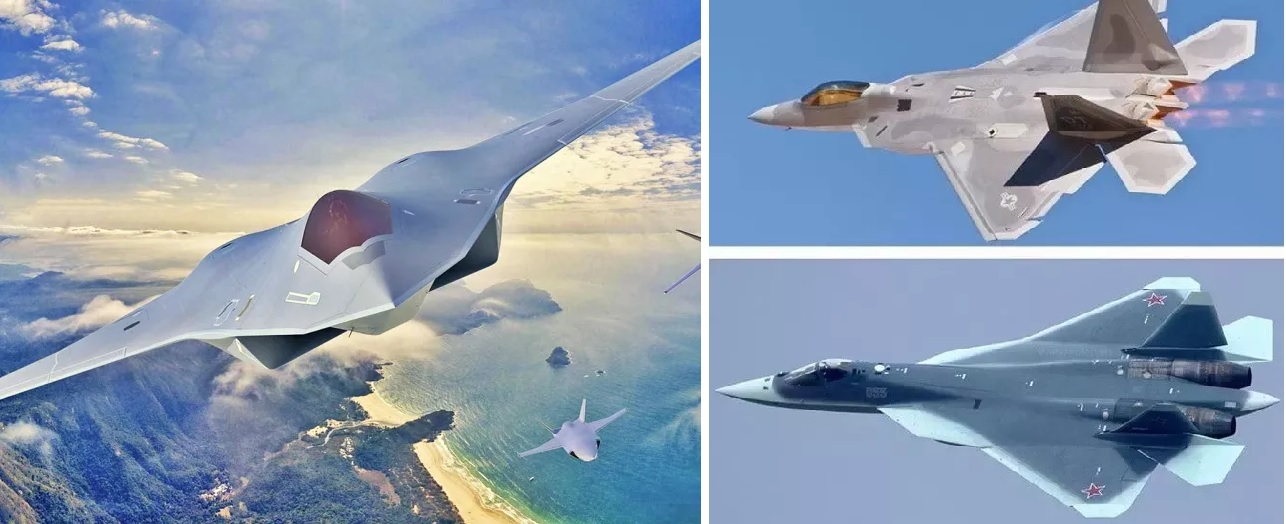 Key Differences Between 5th vs. 6th Generation Fighter Jets
Key Differences Between 5th vs. 6th Generation Fighter Jets
-
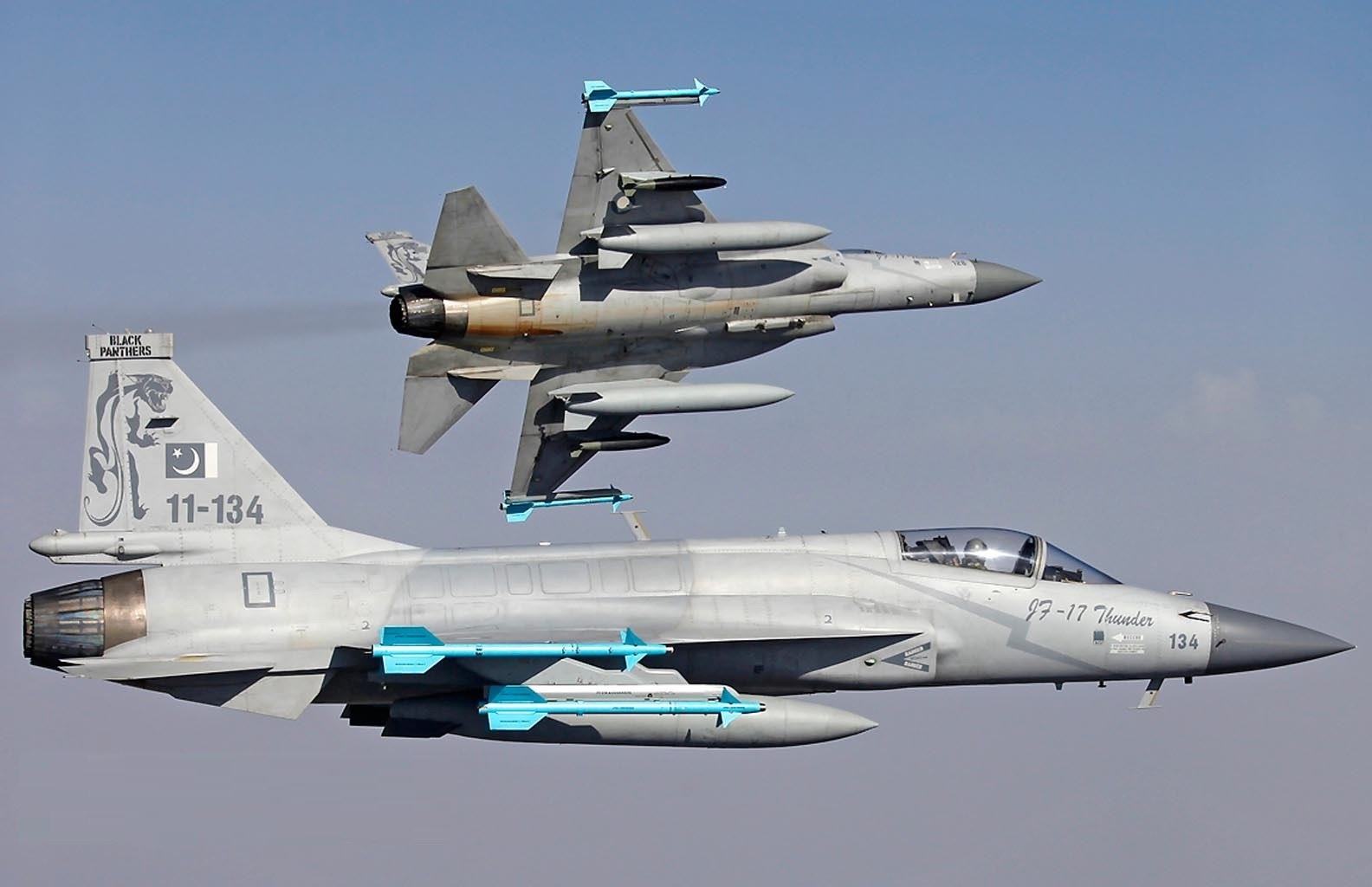 Pakistan Air Force to Unveil Stealth-Enhanced JF-17 Block 4 Fighter Jet by 2028
Pakistan Air Force to Unveil Stealth-Enhanced JF-17 Block 4 Fighter Jet by 2028
-
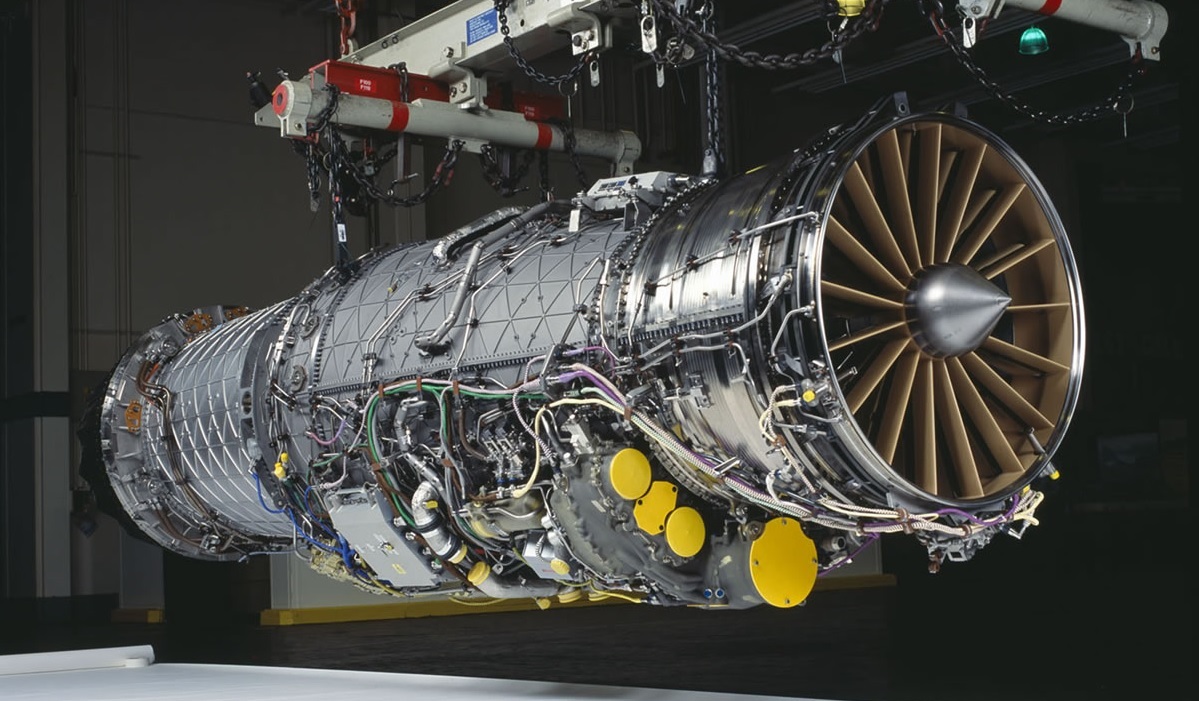 India’s AMCA Engine Decision: Safran vs. Rolls-Royce Final Expected by 2025
India’s AMCA Engine Decision: Safran vs. Rolls-Royce Final Expected by 2025
-
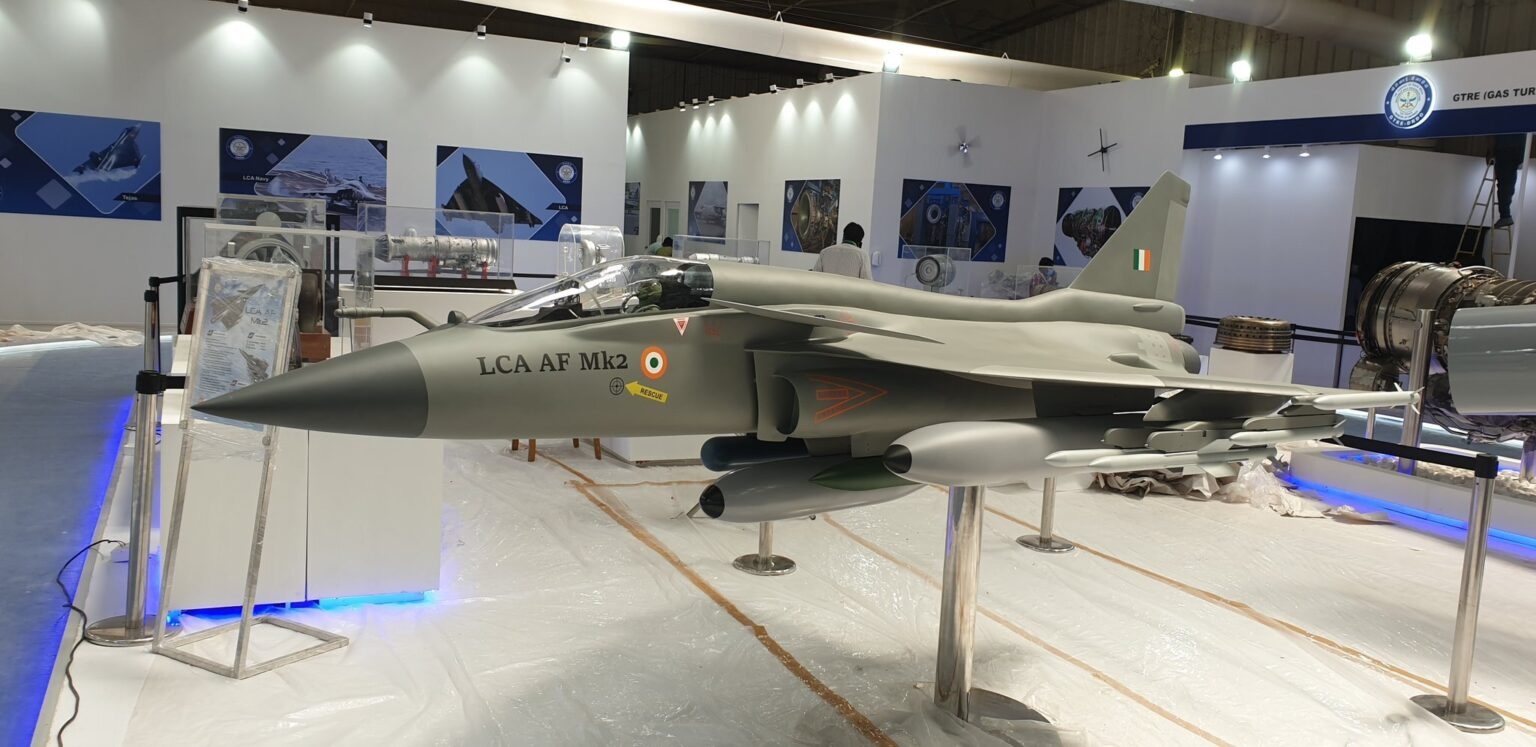 Tejas Mk2 Nears 2025 Rollout as HAL Ramps Up Final Assembly and System Integration
Tejas Mk2 Nears 2025 Rollout as HAL Ramps Up Final Assembly and System Integration
-
 Pakistan Announces 15% Increase in Defence Budget for 2024-25 Amid Economic Crisis
Pakistan Announces 15% Increase in Defence Budget for 2024-25 Amid Economic Crisis
-
 India's TEDBF Program Takes Shape First Flight by 2028: Aiming for Naval Supremacy with Advanced Stealth and Technology
India's TEDBF Program Takes Shape First Flight by 2028: Aiming for Naval Supremacy with Advanced Stealth and Technology
Top Trending in 4 Days
-
 Pakistan Army to Deploy Troops to Gaza by January 2026 Under Trump–Munir Deal, $500 Per Soldier
Pakistan Army to Deploy Troops to Gaza by January 2026 Under Trump–Munir Deal, $500 Per Soldier
-
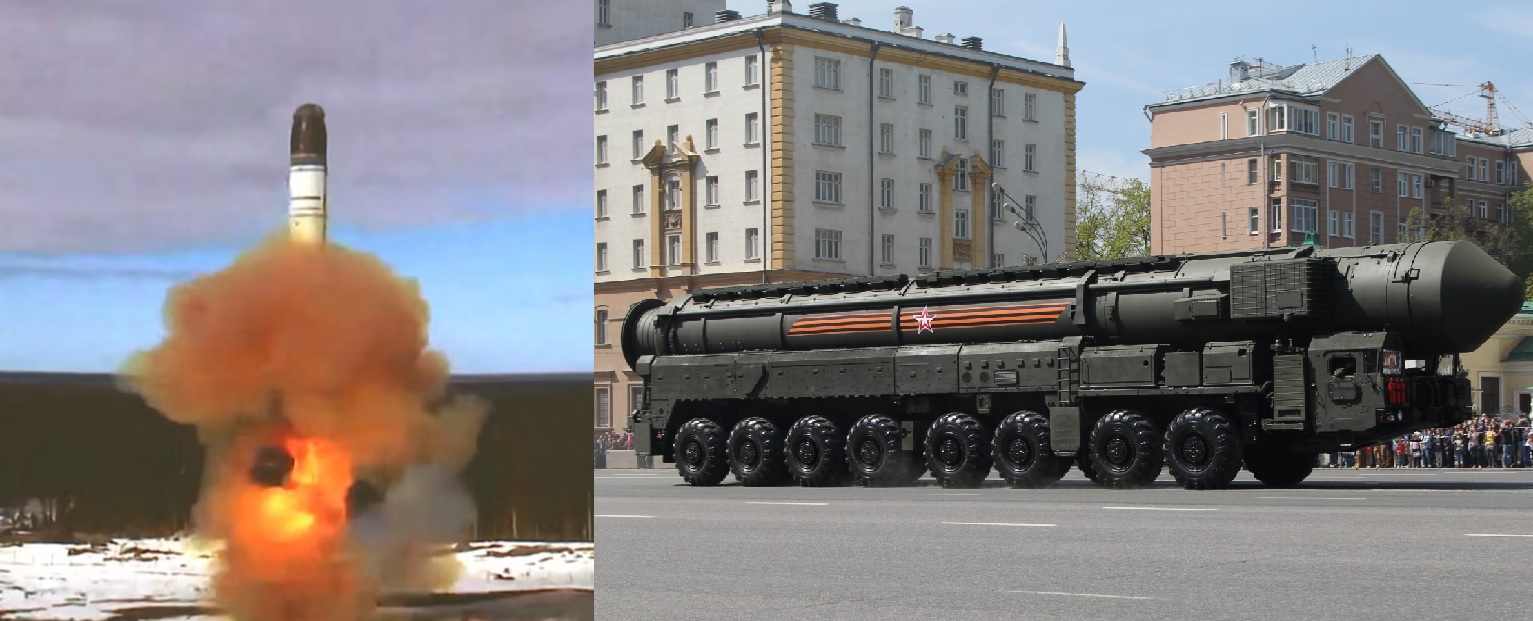 Russia Simulates Full-Scale Nuclear War in Siberia, Deploys Yars ICBMs on Combat Patrols
Russia Simulates Full-Scale Nuclear War in Siberia, Deploys Yars ICBMs on Combat Patrols
-
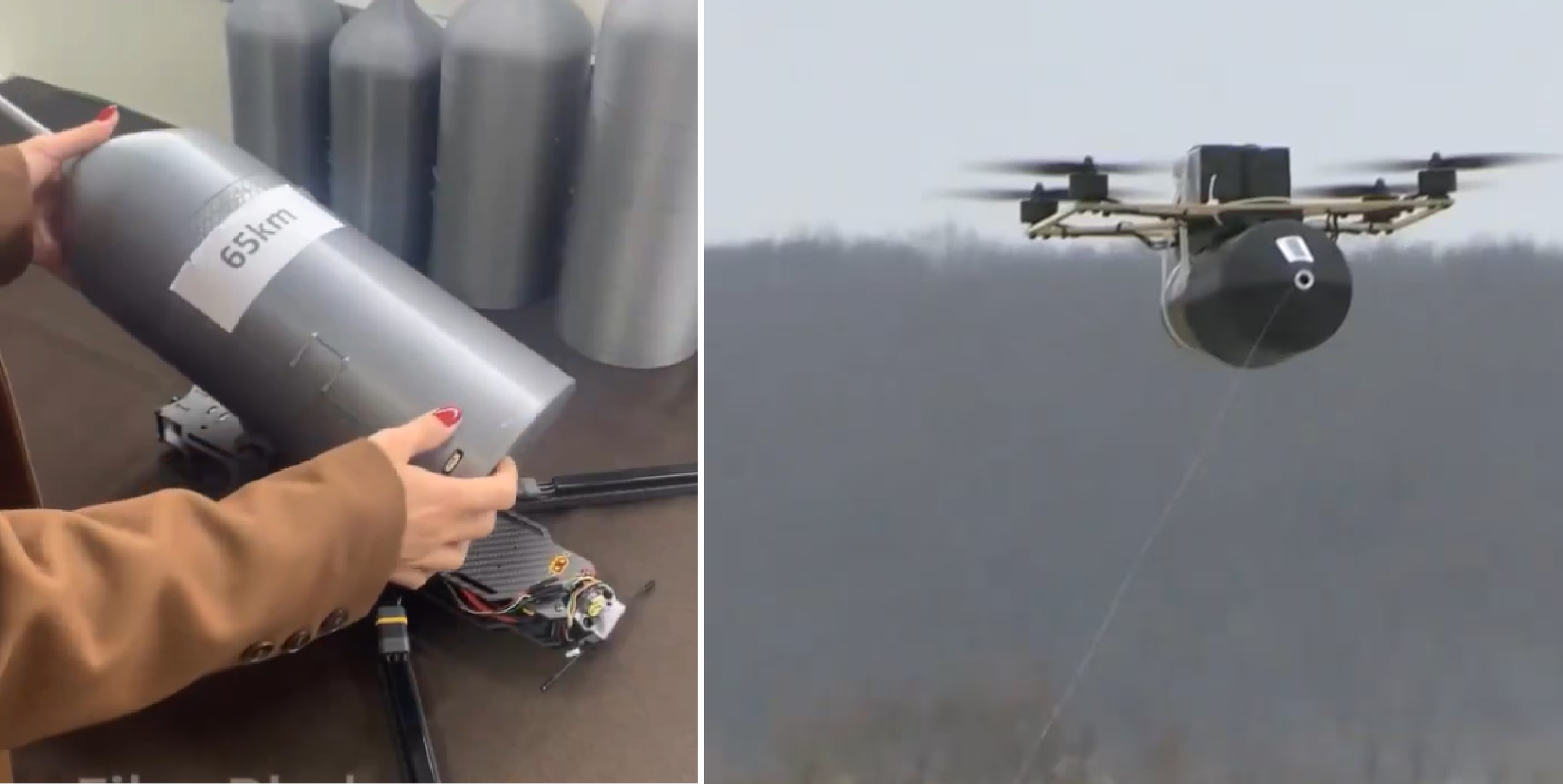 Russia Claims Test of 65-Kilometre Fiber-Optic FPV Drone Link
Russia Claims Test of 65-Kilometre Fiber-Optic FPV Drone Link
-
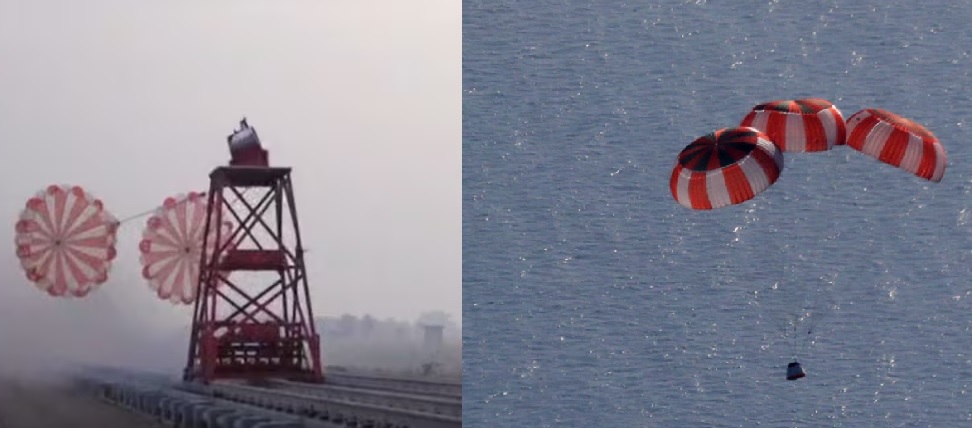 ISRO Successfully Qualifies Drogue Parachutes for Gaganyaan Crew Module
ISRO Successfully Qualifies Drogue Parachutes for Gaganyaan Crew Module
-
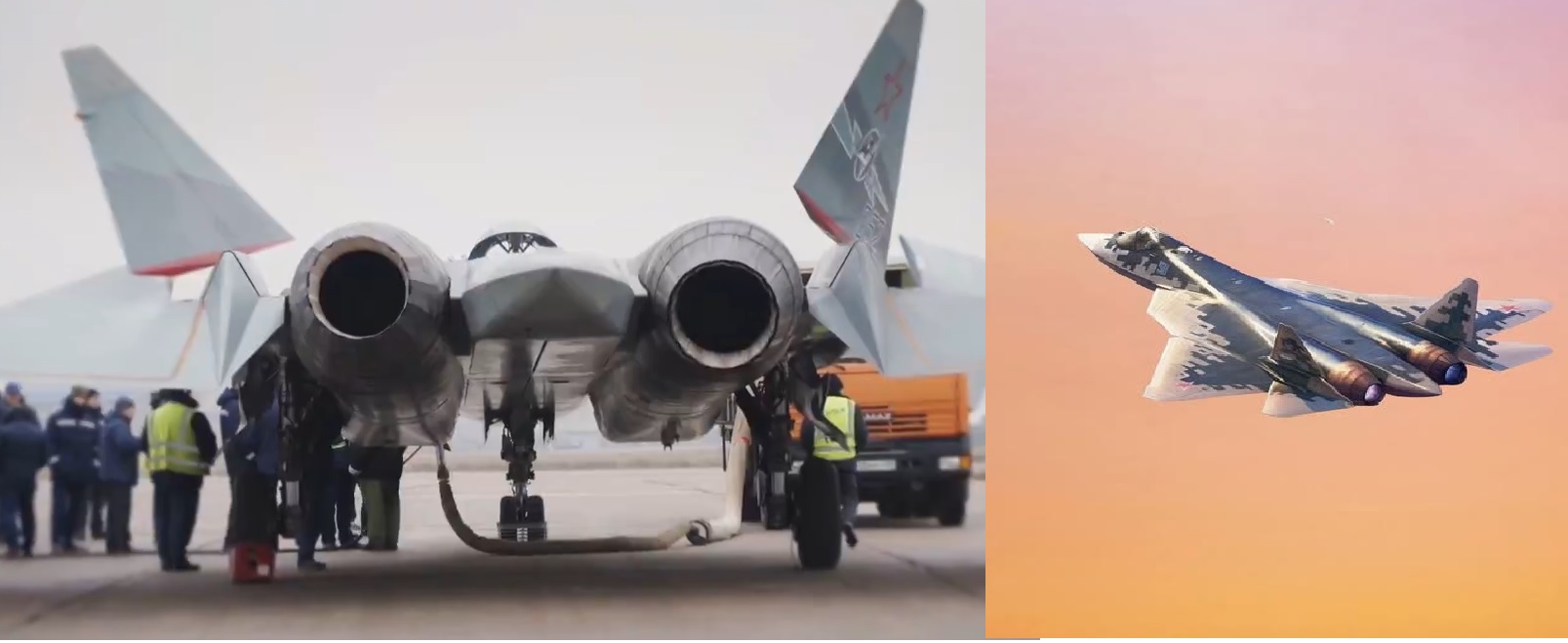 Russian Su-57 Conducts First Flight With Next-Generation Izdeliye-177 Engine
Russian Su-57 Conducts First Flight With Next-Generation Izdeliye-177 Engine
-
 Russian Strike on Mayaki Bridge Threatens Up to 60% of Ukraine’s Fuel Supply
Russian Strike on Mayaki Bridge Threatens Up to 60% of Ukraine’s Fuel Supply
-
 U.S. Seizes China-Linked Oil Tanker Carrying Venezuelan Crude in International Waters
U.S. Seizes China-Linked Oil Tanker Carrying Venezuelan Crude in International Waters
-
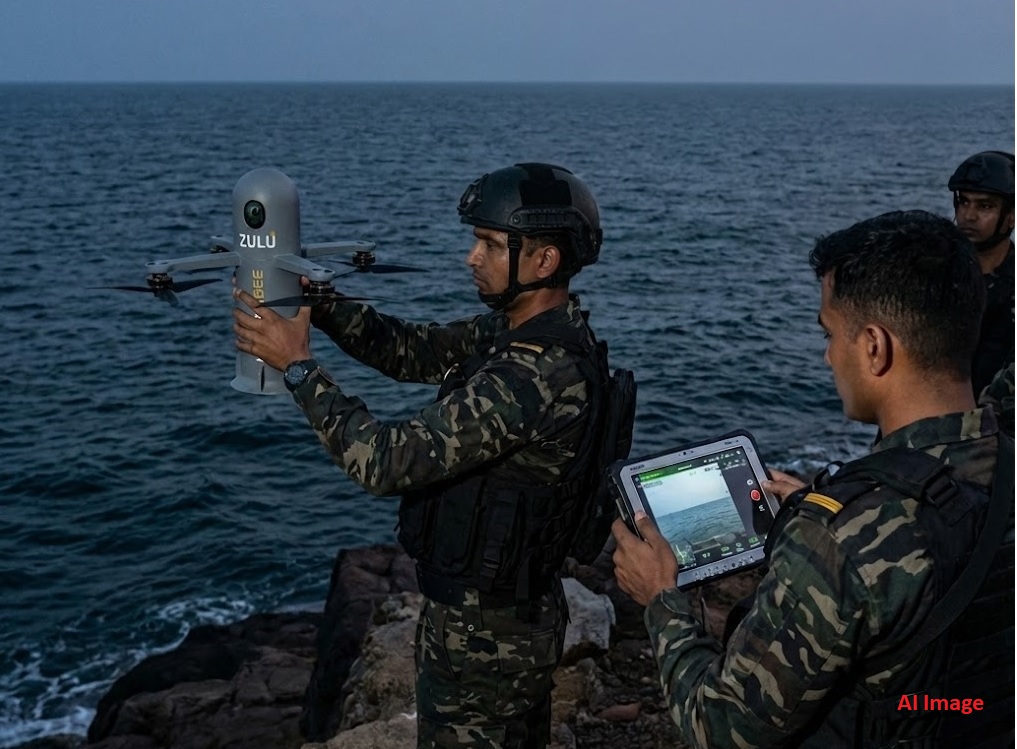 Indian Navy’s MARCOS Induct High-Tech ‘Hoverbee’ Kamikaze Drones for Stealth Operations
Indian Navy’s MARCOS Induct High-Tech ‘Hoverbee’ Kamikaze Drones for Stealth Operations




